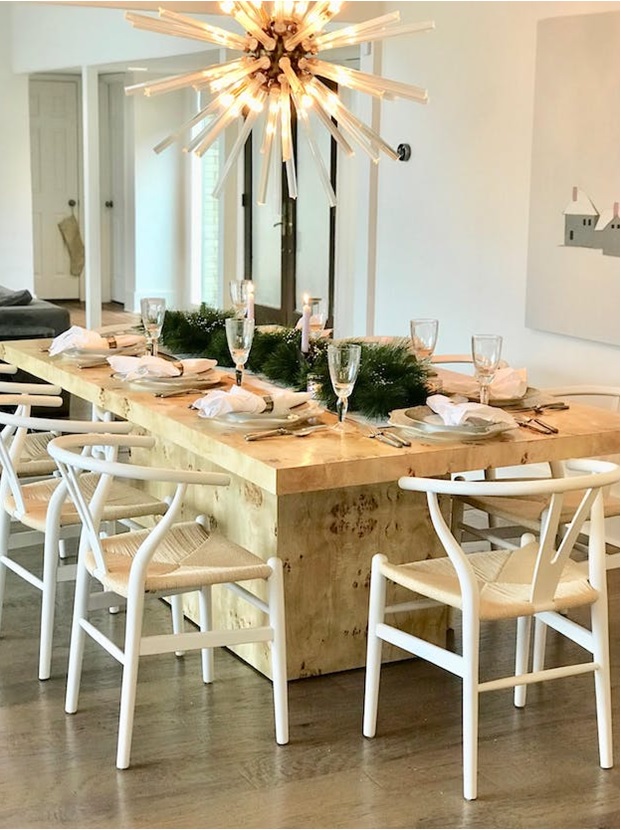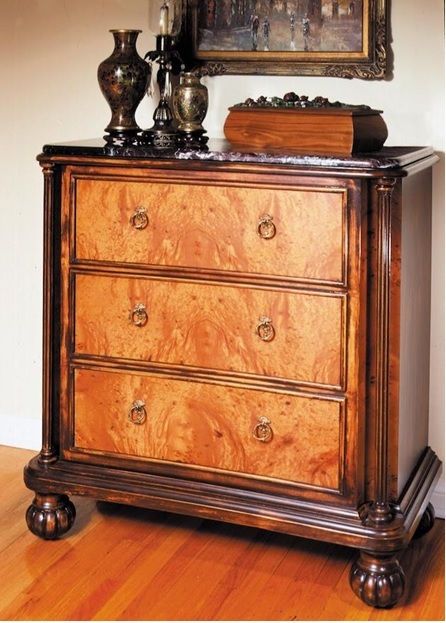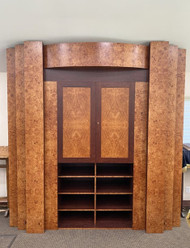For those of you who have never worked with solid burl wood or burl veneer, let’s change that. This post will break down some of the most popular species and cuts of burl wood veneer, along with what makes them special.
What Is Burl Wood?
Basically, a wood burl is an irregularity in a tree that produces a large, amorphous mass of wood tissue. Burl can form in response to an infection, a fungal attack, or even an injury.
Burl is a mass of unsprouted, or anatomically malformed, bud tissue. Think of it sort of like an “ingrown” bud that produces an irregular growth and grain pattern in the wood.
Most burl wood is very dense and the irregular grain pattern can make burl difficult to work with conventional woodworking tools. However, this quality also makes most burls very hard and durable.
The grain orientation of most burls is also highly aesthetic, making burl wood prized among woodworkers for its unique figure and visual appeal.
What Is Burl Wood Veneer?
Burl wood veneer is veneer made of very thin slices of wood burl, applied to a backer. Because veneer is very thin, burl veneer is a very economical and sustainable use of wood burl, as a little solid burl goes a long way and can produce a large quantity of veneer sheets and panels.
Mappa Burl Veneer: Most Distinguished

You may not have heard of mappa burl veneer, grown in France, but there’s a good chance you’ve seen it.
Mappa burl comes from burls produced by black poplar trees and offers very unique and memorable coloration and figure.
Most mappa burl veneer is highly figured with dark bird’s eye patterns on a light, creamy backdrop. This stark contrast and unique grain movement makes mappa burl veneer prized for a wide range of projects.
It is commonly used in cabinetry, but can also be used to finish furniture, musical instruments, and automotive interior paneling - among other uses.
Oak Burl: A Beauty from Eastern Europe
Many species of oak also commonly form burls which are then harvested and made into hardwood furniture and burl wood veneer. Oak burls are most commonly derived from oak trees in Germany, Ukraine, and Russia.
Oak burl veneer typically exhibits rich grain figures with tight clusters and swirls. It is often used to accent furniture and cabinets but has many other uses as well.
Walnut Burl: Most Unique
Walnut burl produces a wide range of unique figures, ranging from light and dark swirls to nearly flame-like patterns.
Like mappa burl veneer, walnut burl has areas of stark contrast between light and dark areas although in walnut the general coloration of the wood is typically much darker than in mappa burl.
Walnut burl can be used to accent furniture and cabinets, as well as for a wide range of other nice uses.
Redwood Burl Veneer: A Practical Alternative to Solid Wood
Redwood burl is a practical alternative to solid redwood, which is in precious short supply. Among the most common figure in redwood burl veneer is flame figure, which produces sharp, striking undulations and wisps in the grain.
Among the most elegant of all burl wood veneers, redwood burl veneer possess rich red-brown coloration and unique figure, suiting it nicely to inlaying, cabinetry, furniture and musical instruments, as well as other decorative uses.
Maple Burl: Most Brilliant Figure
Maple burl, which often exhibits the curly grain found in other maple panels, can be characterized as “chatoyant,” which means it appears to gleam under certain angles of light, and appears to be deeper than it really is. It often has a pinkish tone, similar to cherry wood.
This makes maple maple burl veneer truly unique in that it almost glows. The flame patterns in highly figured maple burl veneer sheets and panels are great for ornamenting furniture, cabinets, musical instruments, automotive panels, and much more.
Myrtle Burl: Muted, Subtle, Yet Elegant
If you’re looking for a somewhat toned-down burl, certain cuts of which can be relatively affordable, consider myrtle burl veneer, of which we offer several different varieties.
Most of our cuts of myrtle burl veneer are warm blonde in color and are punctuated with slightly darker areas of tight figure.
Like the other burl wood veneers mentioned here, myrtle burl veneer can be used for high-end furniture as well as in automotive, marine, and aircraft interiors.
Carpathian Elm Burl: Most Premium
Carpathian elm burl veneer, almost immediately recognizable due to its richly contrasted dark flame, swirl, and bird’s eye figure on a lighter backdrop, is one of the most prized of all burl wood veneers.
Despite the high cost, the unique figure and coloration of carpathian elm burl veneer makes it uniquely suitable for millwork, architectural panels, high-end furniture, cabinetry, and automotive interiors - among other uses.
Camphorwood Burl: Best Alternative to Carpathian Elm

One look at camphorwood burl veneer and you might think you were looking at Carpathian elm burl, if you didn’t know any better.
This is precisely the reason this makes a good alternative to the former, especially if supplies are low. The general coloration, figure, and grain pattern of camphorwood burl veneer are very similar to Carpathian elm burl, and camphorwood exhibits excellent insect and decay resistance, too.
Laurel Burl: Unique Coloration
Last but not least we have laurel burl wood veneer, which is unique for its golden-olive colored grain. It is available here in low, medium, and highly figured panels, which are all uniquely useful for furniture, cabinetry, and other similar uses.
High-Quality Burl Wood Veneer in Unique Cuts
Oakwood Veneer is proud to supply high-quality burl veneer in a wide variety of cuts and figure, from an equally wide range of species.
Take a look through our full collection of burl wood veneer and get in touch with us at 800-426-6018 if you need help with your project or have any questions.


